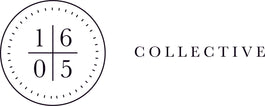Harry Callahan | Portfolio
Harry Callahan was an American photographer and educator whose work is still celebrated for its strong sense of line, form, light and dark. Born in Detroit, Michigan, Callahan began teaching himself photography in 1938, and in 1946 was invited to teach photography at the Institute of Design in Chicago. From there he moved to Rhode Island in 1961 to establish a photography programme at the Rhode Island School of Design, where he taught until his retirement in 1977.
Callahan was known for his deeply personal approach to photography, encouraging his students to turn their cameras on their own lives. He photographed his wife, Eleanor, as his primary subject over a period of fifteen years. Eleanor was essential to his art and he photographed her everywhere, at home, in city streets, in the countryside, alone, with their daughter, in black and white and colour, nude and clothed, at a distance and close up. He tried various technical experiments, including double and triple exposure, blurring, large and small format film.
Callahan's work was not confined to his private life. He also photographed the streets, scenes and buildings of the cities in which he lived, and his work with multiple exposures was truly innovative. He was one of the few innovators of modern American photography, known as much for his work in colour as in black and white.
He left behind an incredible archive of work, with 100,000 negatives and over 10,000 proofs. The Center for Creative Photography at the University of Arizona houses his photographic archives. In 1994, he selected 130 original prints and brought them together under the name French Archives to offer them to the Maison Européenne de la Photographie in Paris. Some of these images, taken in Aix-en-Provence and the South of France, will be the subject of a temporary exhibition at the Granet Museum in Aix-en-Provence in 2019.
Callahan's work has been celebrated with exhibitions and retrospectives, including one at the Museum of Modern Art in New York in 1976/1977. He was awarded the Edward MacDowell Medal and the National Medal of Arts, and represented the United States at the 1978 Venice Biennale. Although he left almost no written record, his photographs speak volumes and have left an indelible mark on the world of photography.

Eleanor
In 1993, Callahan met his future wife, muse and the subject of many of his photographs: Eleanor Knapp, on a blind date. She became one of his most important influences, both personally and artistically. In fact, Callahan considered his wife to be his greatest subject, and he photographed her over a period of fifteen years. Eleanor became essential to Callahan's art from 1947 to 1960, and during this time he photographed her everywhere - at home, in city streets, in the countryside, alone, with their daughter, in black and white and colour, nude and clothed, at a distance and close up. He tried various technical experiments, including double and triple exposures, blurring, large and small format film, to create unique images of his muse.
Callahan's photographic vision was also deeply intertwined with his personal life. His wife Eleanor was pregnant with their daughter Barbara, when she first appeared in his photographs. Over the years, Callahan captured intimate moments of his family life, and his photographs are often imbued with a sense of tenderness and warmth. His work depicts a world that is both deeply personal and universal, capturing the essence of the human experience in a way that is both profound and relatable.

Inspiration and Mystery
Callahan's work was not only innovative but had a profound impact on the world of photography. He was one of the few innovators of modern American photography, known as much for his work in colour as in black and white. His photographs are often characterised by a strong sense of line and form, light and dark, and the use of multiple exposures. In 1955, Edward Steichen included Callahan's work in The Family of Man, MoMA's popular international touring exhibition, bringing his art to a worldwide audience.
Despite his contribution to the field of photography, Callahan remained a private and retiring individual, leaving almost no written record. He kept no diaries, letters or teaching notes, and his technical photographic method consisted of getting up almost every morning, walking around the city where he lived and taking numerous photographs. Yet for all his photographic activity, Callahan estimated that he produced no more than half a dozen finished images a year, each one the result of his unwavering dedication to his craft.
Today, Callahan's legacy lives on through his extensive collection of photographs and the many students he taught over the years who have gone on to become prominent photographers in their own right. His work continues to inspire and influence new generations of photographers, and his contribution to the art of photography remains unparalleled.

